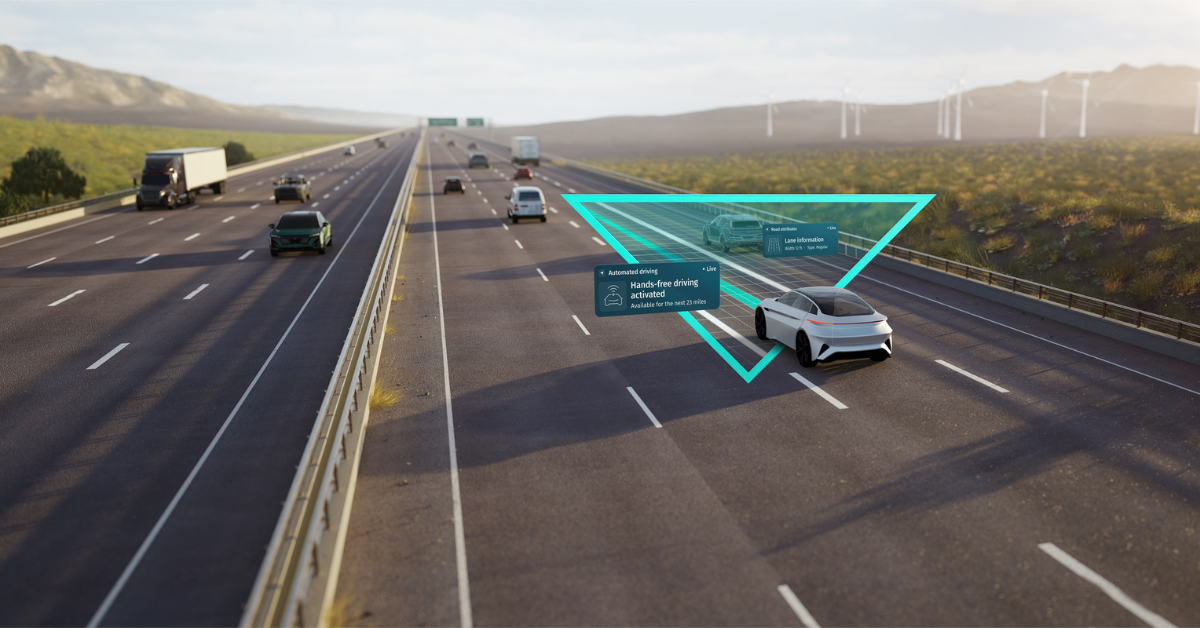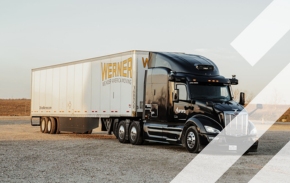Tomas Ohlson, Founding Engineer & SVP Technology of Einride, the Swedish electric and autonomous truck pioneers, answers Intertraffic’s probing questions
Intertraffic: The issue of range anxiety is still one of the reasons why potential buyers are hesitant about buying electric cars. How is this problem addressed in the heavy EV sector?
Tomas Ohlson (TO): When we first started Einride, we would constantly hear that you can’t do transport with electric trucks. Our live operations in now eight markets have proven that you can. Misconceptions that we continue to face every now and then are that “the battery is too heavy” or worries based on range anxiety. The real fact is that most transport doesn’t happen in those long ranges, across entire countries. The day-to-day reality of haulage is very predictable and made of shorter distances and low complexity environments. We think it’s important to rethink transport and leverage intelligent movement to go electric.

Intertraffic: One of the facets of EV ownership is the perceived lack of charging infrastructure available. With the impending advent of electric freight logistics, how will a similar challenge be tackled and, secondly, what can a company such as Einride do to influence it?
TO: The successful deployment and growth of electric transportation is about much more than electric vehicles alone. Achieving optimal efficiency requires a network of well-designed and well-integrated physical and digital infrastructure – in other words, rethinking the entire shipping ecosystem. In order for the road freight industry to be resilient long term and be able to be more sustainable the sector needs to be digitized, electrified and automated and this is where we at Einride play an important role. We are looking at re-architecting the industry from the ground up, by integrating an entirely new approach to all aspects of how goods move.
Achieving optimal efficiency requires a network of well-designed and well-integrated physical and digital infrastructure
An extensive and effective charging network is key to accelerating the electric transition and will significantly improve the economic competitiveness of electric trucks. We’re building our Einride Stations with all of the relevant components in mind. As much as the chargers themselves, the locations of the chargers are just as important to ensure the vehicles can cover the relevant ground. Of course, chargers are only beneficial when they are not occupied by other users, which is why another key consideration is the accessibility and availability of the charging infrastructure. This is where shipping intelligence based on digital infrastructure comes in – enabling automated coordination of charging, alongside many other advantages such as driver schedules and vehicle availability. Operating an electric fleet most optimally requires an automated and data-driven solution that coordinates all parts of the transport ecosystem.
Shippers who are able to access the right mix of these infrastructure components can reduce their transportation emissions by up to 95%, improve their on-time and in-full delivery, and save costs due to smarter capacity utilization and improved route planning.

Intertraffic: What are some of the more obvious benefits of electric trucks over diesel and what are some of the less obvious?
TO: In addition to the emissions-saving benefits they offer, electric trucks can be far more cost-effective than diesel trucks in the long run. Unlocking the potential of electric fleets ultimately comes down to harnessing the right mix of digital intelligence.
The European Federation for Transport and Environment predicts that from as early as 2025, electric trucks will outperform diesel trucks in most use cases in terms of total cost of ownership (TCO) and, by 2035, all new electric freight trucks in Europe will be cheaper to run, will drive just as far, and will be able to carry as much cargo as diesel trucks. This might come as a surprise given that electric trucks currently bear a higher initial price tag than diesel trucks, but ultimately, the lower overall cost of electric freight reflects the fact that there are far more factors at play beyond the purchase price of the vehicle. When comparing the TCO of electric trucks versus that of diesel trucks, it is the electric trucks that are optimized through a digital platform that prove mightier – achieving a lower TCO over time compared to diesel trucks. Connected, electric trucks have lower operating costs for energy, maintenance and tolls, so the longer and further the truck drives, the more cost-competitive it becomes compared to a diesel truck.
Unlocking the potential of electric fleets ultimately comes down to harnessing the right mix of digital intelligence
Intertraffic: Your company is firmly at the forefront of the autonomous electric freight sector – can you provide some background information on how autonomous trucks operate? The "catch" in the past has been "where and how would an autonomous truck refuel?" but if it's electric and it has a much greater battery capacity than an electric car, that catch becomes irrelevant…
TO: Einride’s autonomous, electric vehicles are coordinated by our intelligent freight mobility platform Einride Saga. The vehicles utilize a sensor suite of radars, lidars and cameras to navigate autonomously. We’re taking a unique approach by not having a driver in the vehicle, but keeping a human in the loop through its Remote Interface from which a remote operator can monitor the vehicle and assist the vehicle's autonomous driving system when needed. The cabless design of the autonomous vehicle allows for lower weight and better aerodynamics and, with remote oversight, negates the need for a safety driver onboard.
We believe that going autonomous does not mean you need to lose the human element but rather that machines are stronger with the human element still in the loop. While our autonomous vehicles are designed to operate autonomously, our remote operators help make autonomous scalable, secure and ensure optimal efficiencies and safety at all times for our vehicles.
We believe that going autonomous does not mean you need to lose the human element but rather that machines are stronger with the human element still in the loop
Intertraffic: In terms of tyre wear, how do electric trucks fare in comparison with diesel vehicles?
TO: We've installed various tools to track and get insights on this to best optimize electric operations as they become more mainstream, but we do know there are different wear patterns and lifecycles to EV tires and are working to develop best practice models and solutions for tire management with commercial EVs.
Intertraffic: Einride has made incredible progress over the last few years and other companies are having to play catch-up. What keeps you ahead of the curve, as it were?
TO: We currently see no competitor that maps the entire ecosystem like we do. When looking at the broad landscape of electric and autonomous vehicles, there are a number of companies tapping into various singular opportunities within this important space but where we stand apart is that we provide a full end-to-end solution in the transportation of goods that is sustainable, cost effective, transparent and high performing. We’re taking this approach because there is no time to wait and we want to enable companies to make the switch and reach their sustainability goals. Our freight mobility solutions for electric and autonomous mobility consist of Capacity as a Service (CaaS) and Software as a Service (SaaS), enabling a first-of-its-kind ecosystem that comprises four key product segments in a unique combination: the intelligent platform Einride Saga, electric and autonomous fleets, charging infrastructure and connectivity networks.
The switch to electric is not as simple as swapping a diesel truck for an electric truck. It will never be a one-to-one replacement. Transitioning to fully electric takes time and is far more complex than fossil-fuel transportation, encompassing several additional parameters such as vehicle routing, weather conditions, lifetime maximizations, and energy usage – to name just a few. Our turnkey service helps shippers electrify without having to navigate these complexities and requires no costly overhead investments from the customers as they are able to benefit from fully electric shipments without having to purchase any electric vehicles themselves. As for having the required knowledge, Einride operates one of the largest, software-enabled heavy-duty electric fleets in the world and focuses on identifying the best use cases that allow our customers to stay.
Transitioning to fully electric takes time and is far more complex than fossil-fuel transportation, encompassing several additional parameters such as vehicle routing and weather conditions

Intertraffic: Can you elucidate on how the extraordinary advances in AI fuels (if you excuse the pun) your progress and how it affects the autonomous and electric sides of the business.
TO: Our own freight mobility platform Einride Saga is built on three pillars; applications, data models and data, together resulting in the intelligent backbone of Einride’s ecosystem. Even the initial step of transitioning to electric shipping in the most sustainable and cost-efficient way requires an accurate and actionable assessment of electrification opportunities. Prerequisites for a successful electric rollout include: knowing where there is electrification potential within the network, deciding where to install electric capacity and where to deploy trucks; and knowing how to expand or scale the fleet(s), in line with the emissions-savings goal and cost-savings goals.
Eventually, operating an electric fleet also requires an automated and data-driven solution that coordinates all parts of the transport ecosystem. This includes so many factors such as where electric vehicles are deployed and when, where to install charging infrastructure and which routes the vehicles will take at any given time. We’re also taking into account how drivers receive their instructions, at which points along the route to charge, how to optimize battery usage, the maintenance of vehicles and much more. All of these tasks are either automated or made effortless through our platform.
Intertraffic: Finally, the media loves to put the potential implementation of disruptive technology into timeframes, so we feel duty-bound to ask: when do you think it's feasible that electric trucks will outnumber diesel vehicles on our highways?
TO: While it would be difficult to predict a concrete timeframe, a variety of research and data (e.g. by T&E, the US Department of Energy and PwC) backs up predictions that electric trucks will start to outperform diesel trucks in most use cases in terms of TCO, range and payload from as early as 2025, with this development gaining further momentum over the next decade.
The favourable TCO of electric trucks, when compared to diesel, is one of the factors driving the electric transition and in addition many regulations to foster the electric transition have been enacted. Higher truck road tolls, mandatory targets for charging stations and ultimately actions like the EU ban on the sale of CO2-emitting vehicles from 2035 play a critical role in speeding up the shift to more sustainable freight. While this may not mean that we won’t see any more diesel trucks on our highways in 2035, the use case for electric vehicles is being made very strongly today.
Research backs up predictions that electric trucks will start to outperform diesel trucks in terms of TCO, range and payload from as early as 2025






